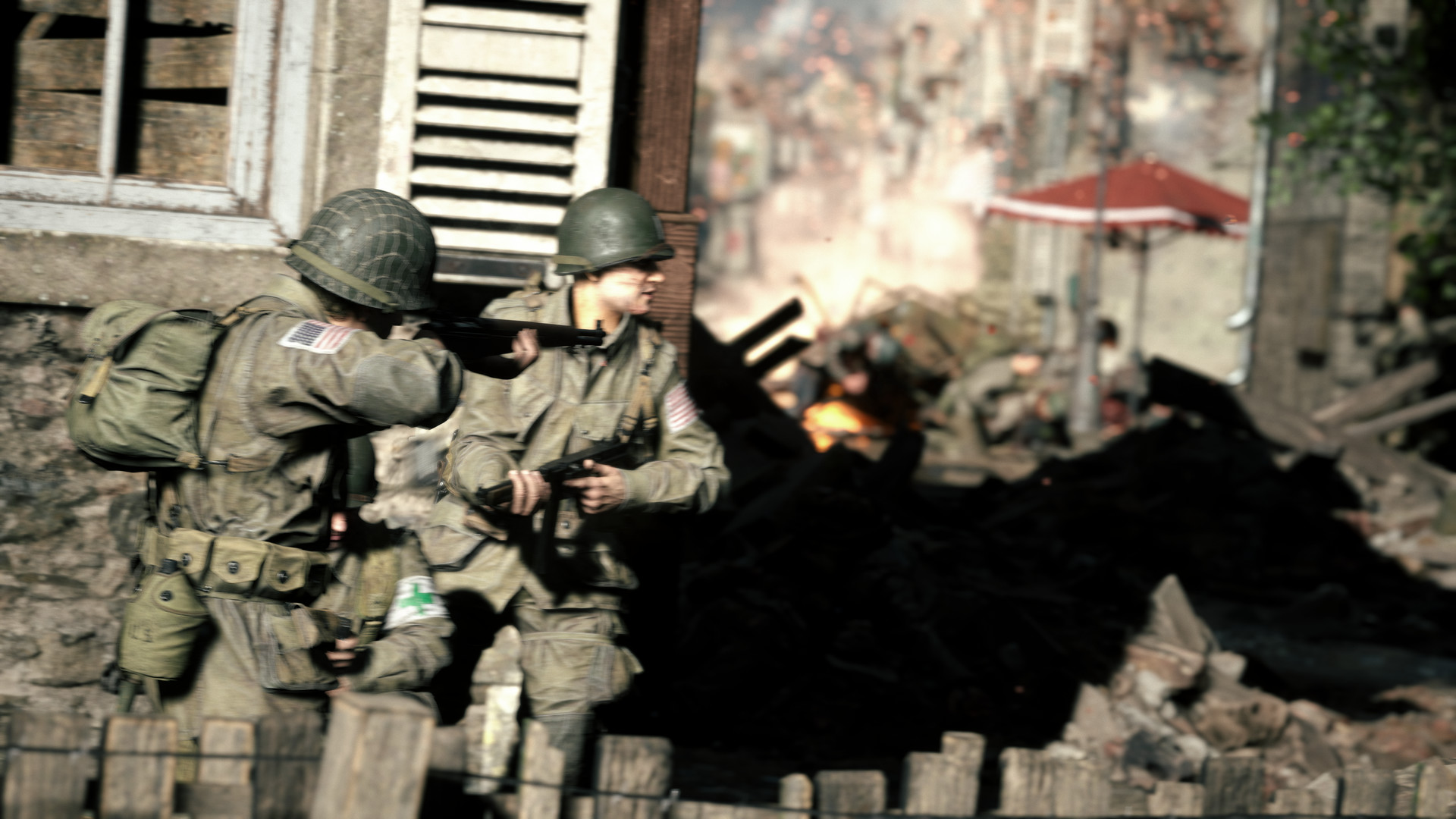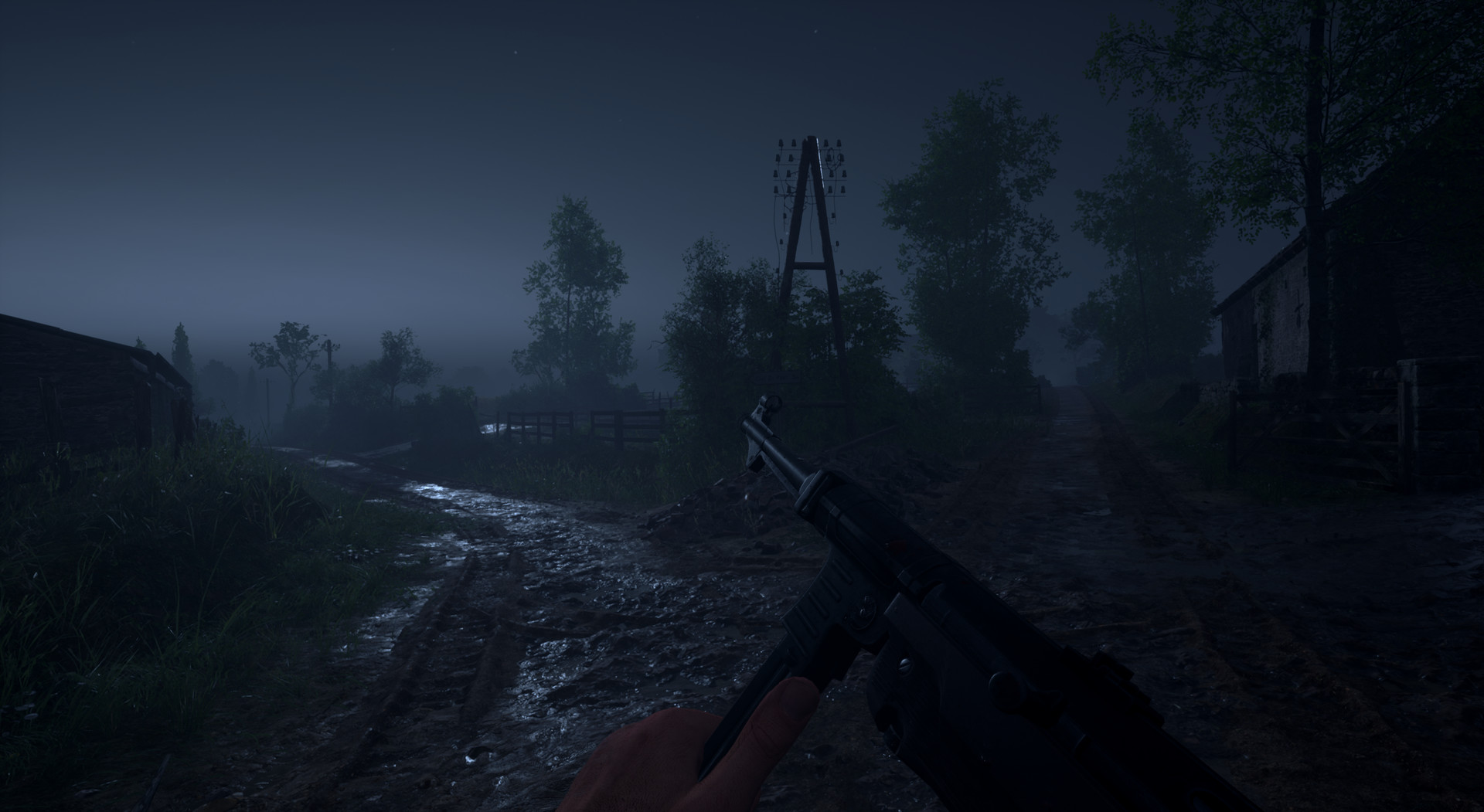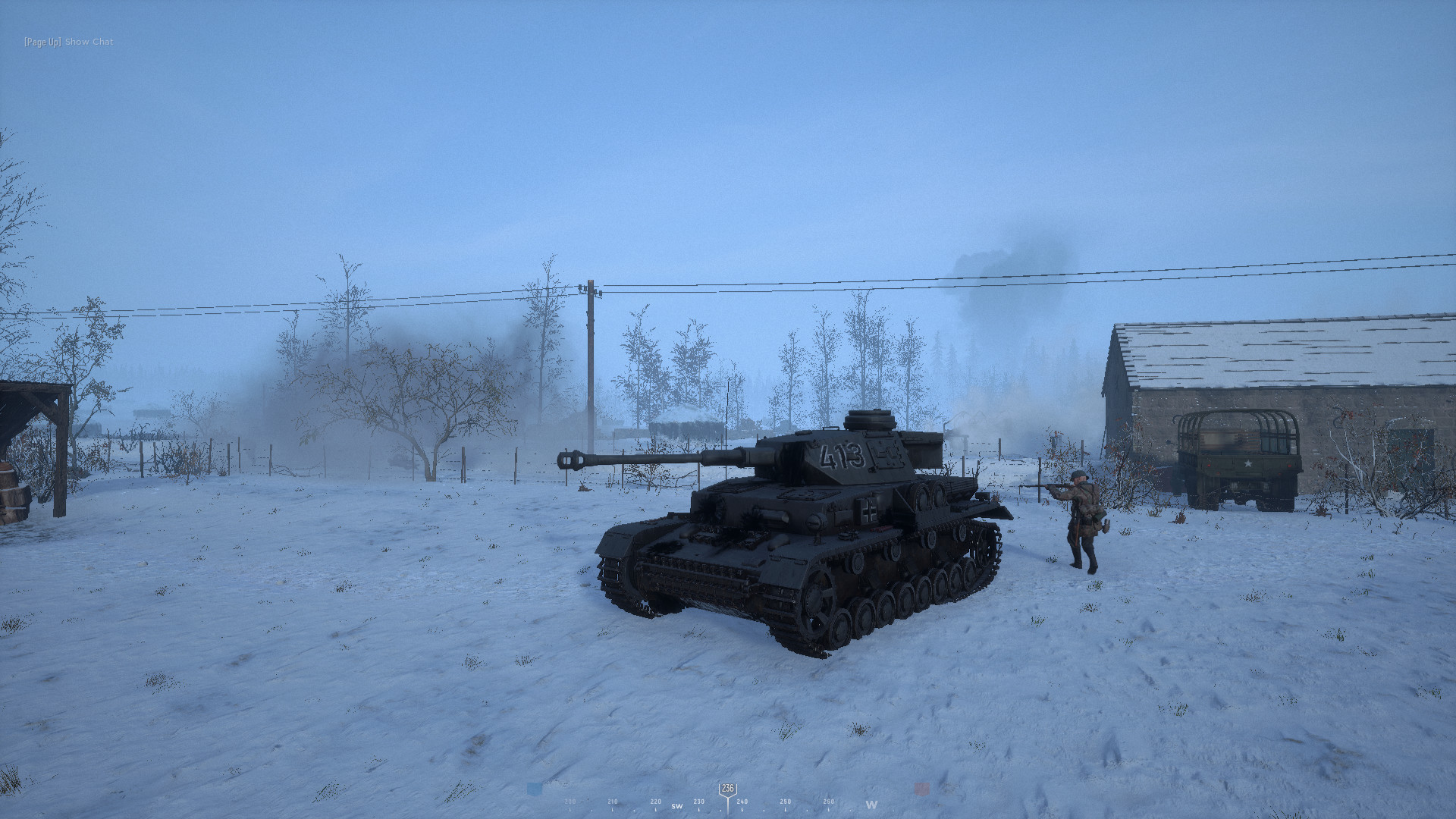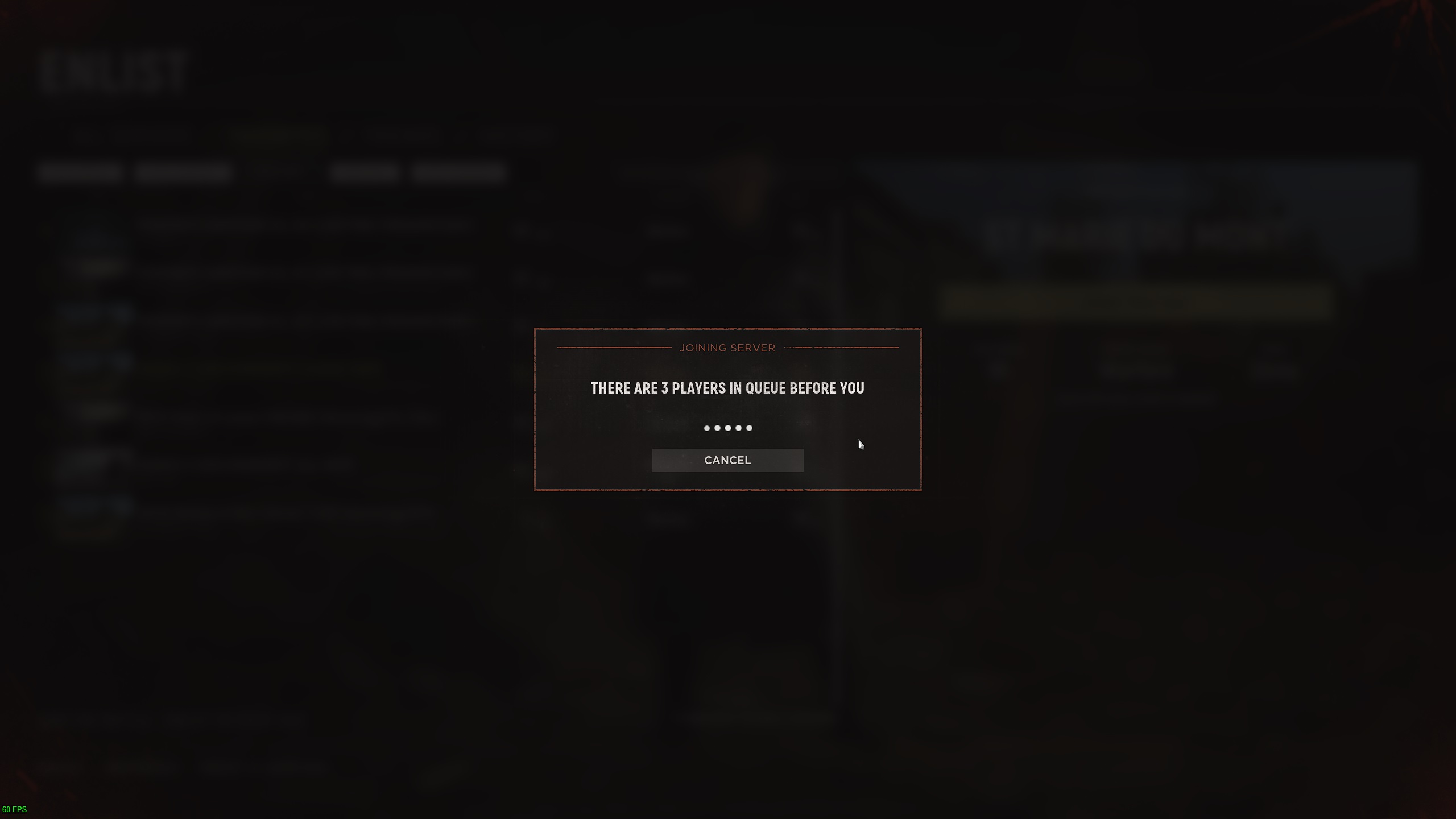Hell Let Loose is too good for its own good
WWII shooter Hell Let Loose is a breath of fresh air for gamers like me. That is to say, people who’ve grown out of the mainstream, run-and-gun shooting experience and want something a little more considered.
Now, I don’t mean that to sound snobby or patronizing to anyone who enjoys mainstream shooters. I myself devoted many years to Call of Duty and Battlefield multiplayer, addicted to the frenetic action, chaotic choke points and, of course, the tactless banter. So I get it. Now though, approaching 30, busy and increasingly grumpy, even the thought of all that makes me feel tired. Why on earth would I want to sit listening to a group of kids shouting abuse at me? I wouldn’t, but I’m still in the mood for some shooting.
The solution is Hell Let Loose (HLL) from developers Black Matter. It’s a game all but free of weapon skins and shouting kids, a place for us elders with our carpal tunnel syndrome to go to see out the rest of our gaming years in peace (minus the explosions and what not). And after some time away from HLL because of connectivity issues in my house, this weekend I’m back on it, and I’m pretty excited.
The mature first person shooter
Angled towards strategy, team cohesion and giving players a taste of military simulation, Hell Let Loose is unmistakably a game for adults. At 160 hours of gameplay, I’ve experienced most of what this game has to offer.
Set in the European theater of WWII, it’s a contemplative first person shooter, satisfying the competitive itch in a more thoughtful way than you might be accustomed to. There are many of the same components you’d find in the best games of the genre: headshots, loadouts, snipers, teamplay, respawning etc. But what sets this game apart from others is its pacing, realism and the extent to which team play and strategic thinking decide the outcome of matches.

You play within one of two teams of 50, each led by a commander, whose job it is to set an overall strategy, directing and supplying subordinate squads of players accordingly. There are recon squads for sniping, artillery suppression and general nefariousness; tank squads for heavy firepower and anti-tank support; and infantry squads to do the grunt work of attacking and defending en-masse. Each squad is led by an officer (usually military fantasists that like shouting at you a lot), who takes the commander’s orders and turns them into squad tactics on the ground. Under the officer are players, each of whom has a role to play in their squad, like medic, heavy gunner or engineer. The efficacy of a team depends on each squad performing its role, with each player pulling their weight. Unlike other shooters, where a one-man-army can decide an entire game, in HLL, only teamwork makes the dream work.
Pacing-wise, things can be rather slow. The maps are huge, so missing a transport truck at the start or losing your respawn point to the enemy leaves you with one option: go on foot. If you play Hell Let Loose, you’re going to run. A lot.
Then, even when you get to the action, the game forces you to slow down. If you’re not shot immediately upon reaching the front line, you soon will be without taking some time for measured thought. Charging guns-a-blazing into the enemy lines will get you shot instantly. Standing up in a trench will get you shot instantly. Waltzing into a road or open field will get you shot instantly. Every step must be considered, else certain death. You have to think before you act, and even then you’re probably going to die.

None of this makes it boring, though. Far from it. While the whole teamwork thing may initially sound like a bit of a buzz-kill to those used to chasing personal deathmatch glory, it’s actually incredibly enjoyable. Land yourself in a decent squad with an effective officer, pulling off daring maneuvers around enemy flanks, and you find yourself experiencing a level of camaraderie unmatched by any other game.
Then there’s the feel of Hell Let Loose: it’s an emotional rollercoaster. Tranquil jogs through Normany are frequently and brutally interrupted by the muted thud of an MP40 behind you, enemy footsteps in the next field or a tank rumbling menacingly in the distance. More often than not, you’re dead before you can utter “jump scare,” but if somehow you manage to stay alive, the tension can be unbearable. All of this is enhanced by the game’s soundtrack, which is superb, especially in combat. Sniper rounds crack through the sound barrier overhead; M1 Garand clips ping over and over; while artillery and tank shells thunder relentlessly around you. It often feels as close as I’d ever like to get to an actual war zone, and it’s epic.
Too good for its own good
As I see it, Hell Let Loose only has one real issue: it’s too good. This manifests itself in two ways. I will explain.
While the game’s teamplay mechanics and intricate balancing of roles within a team are some of its best features, they’re also its Achilles heel. Get a good commander, an active squad/officer and the full range of roles covered, and you’re in for an incredible gameplay experience, even if you lose. The problem is that just a few missing links can ruin a match, and the number of moving parts make it so easy for that to happen. Ineffective recon squads? You’ll be hammered into submission by artillery. No or poor commander? The team dissolves into a disorganized rabble. Two squad members doing their own thing? Your squad is too small to push an objective. The complexity of the game, despite making it brilliant, makes it delicate.

Likewise, the game’s popularity also poses a similar dichotomy. On one hand, it’s fantastic to see Hell Let Loose as busy as it is — servers are still packed, three years after release, which speaks volumes about how enjoyable the gameplay can be. On the other, this can make finding and entering a match a real hassle. During peak hours (and even many off peak hours), most servers are almost entirely full. The result is long (think 20-30 minute) waits in the lobby to join a match, either when enough players leave — often when gameplay has gone sour and one side is getting pummelled, as per the paragraph above — or when the match is over. What makes waiting even more infuriating is that often the servers aren’t actually full, with several spots being reserved and left unused for members of the clan who host the server.

You can join a server with 5 people in it, as you’ll often see people dismissively advise on reddit threads (‘just join a smaller server and then everyone else will join after you’) — but on maps the size of HLL’s, that really isn’t much fun, and nobody tends to join afterwards. You could also try joining a foreign language server, but doing this risks getting yourself kicked for not communicating if you don’t speak the server’s primary language. Unfortunately, this doesn’t leave you with any option but to just wait it out, which really kinda sucks.
All that said, neither of these issues are going to stop me playing this weekend. Having already clocked up 160 hours, I’ve accepted this game as it is, warts and all. Sure, I’ll have to wait ages to get into a match, and I’ll probably have to play four or five games before getting lucky with a solid team and squad. But when that one good game comes along, Hell Let Loose more than makes up for its shortcomings.
Next: Interested in the handheld for adults? Check out our Steam Deck review.
For all the latest Technology News Click Here
For the latest news and updates, follow us on Google News.
